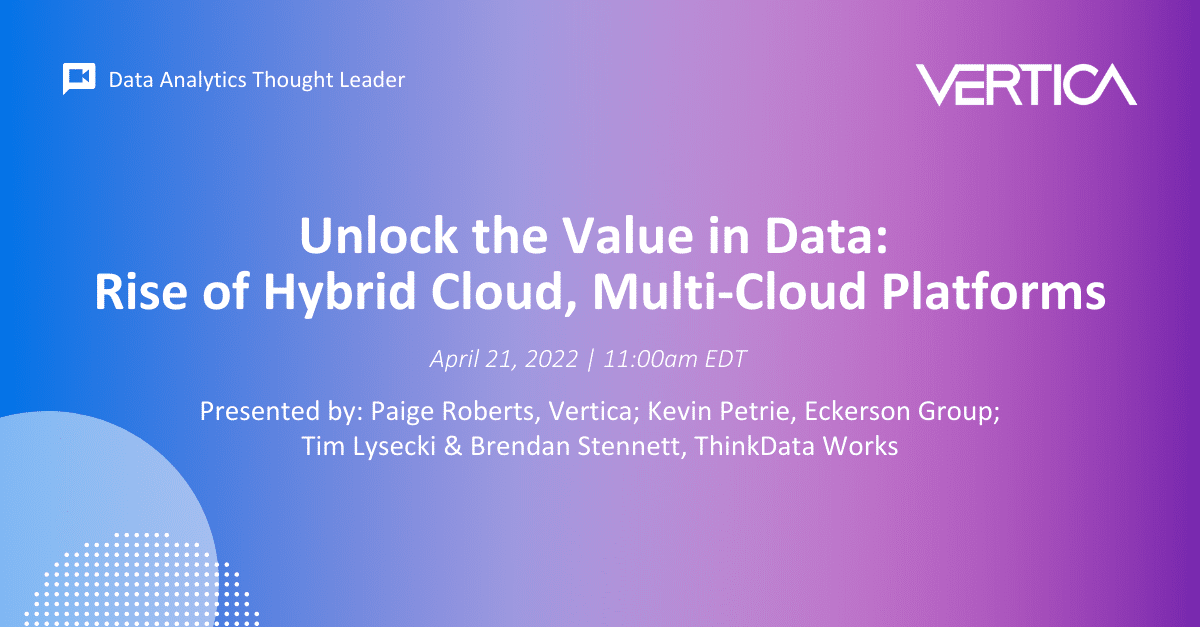Thought Leadership Webcast: Probing the Concept of Cloud-Native Databases
Today, there’s a lot of buzz about cloud-native databases and how essential their capabilities are when moving data analytics workloads to the cloud. On-premises-only databases are rare, while cloud-only databases are common. What does “cloud-native” actually mean? Does it simply mean “cloud-only?” What’s the real difference, and is it important?
In your planning to move analytical workloads to the cloud, are there specific reasons to prefer a database that can exist both on clouds and on-premises? Or, are there specific reasons to prefer a database built only for the cloud?
In this webinar from our Thought Leadership Series, we’ll deconstruct the propaganda around cloud-native databases and discuss their place in your design of analytical systems.
We’ll discuss:
- Deployment – when you need simplified deployment or choosing optimal clusters for your specific workloads
- Compute and Storage Separation – the practical advantages, when it makes sense, and where it can be deployed
- Autoscaling – Advantages, disadvantages and alternatives
- Ease of Admin – what the trade-off is for easy administration, how that can be balanced
- Analytics – the depth of analytics offered on cloud platforms, and exploring options to get the analytic depth you need including machine learning
- Data Governance – circumstances where business users control costs, handle compliance and data replication versus IT management of those costs
Attend this webinar to learn how to deal with concerns like GDPR and other privacy regulations, vendor lock-in, pricing predictability, and more in your analytical database design.
Watch on-demand













